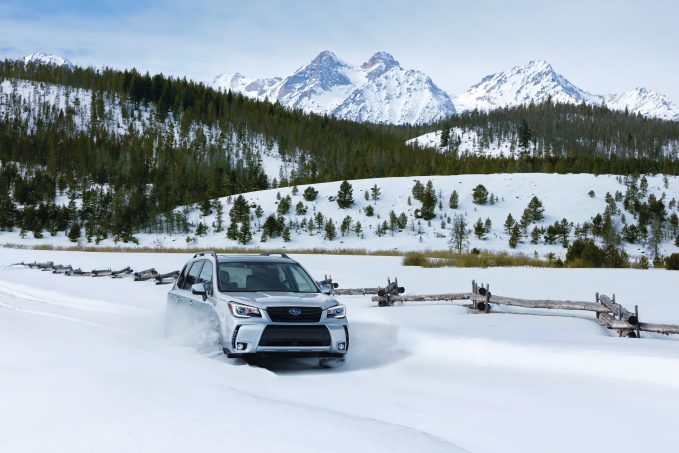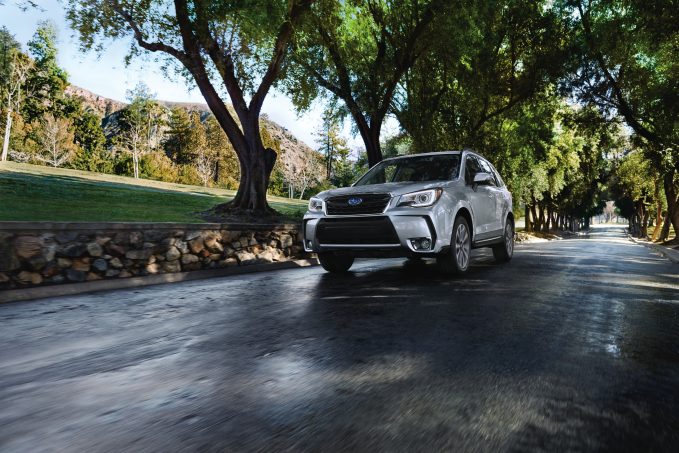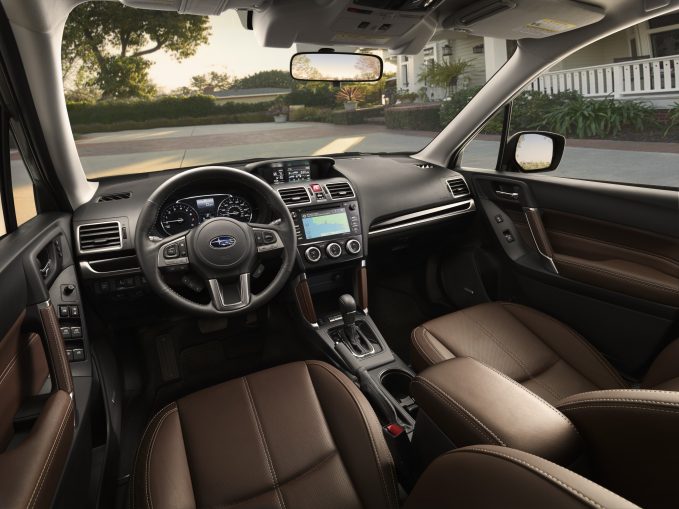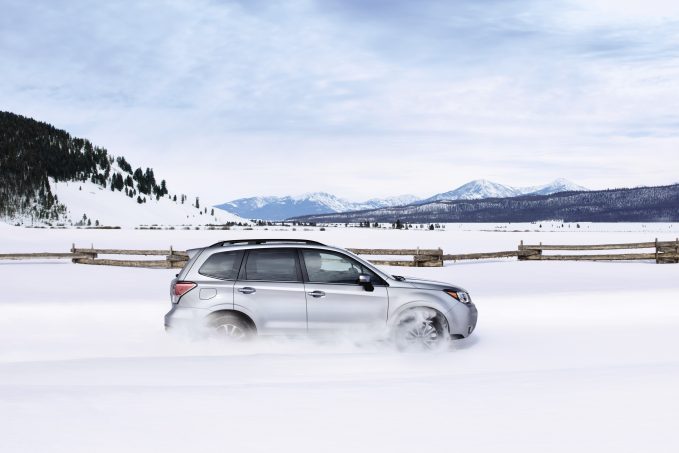Every year when winter arrives, snow falls and the cars on the road slow to a walking pace. Patience is an important part of driving in the winter, and one that I’ve learned to appreciate each year. But what if you don’t want to be patient in the slick, snowy roads? Subaru has a solution.
It’s called the Forester XT, and it is the fastest version of Subaru’s compact crossover. The reason it’s so capable has a lot to do with what’s lurking under the hood. A powertrain borrowed from Subaru’s sport-compact WRX, there’s a 2.0-liter turbocharged boxer engine that makes 250 hp and 258 lb-ft of torque.
Unlike the WRX, it’s only available with one transmission: a continuously variable ratio unit that has more than a few neat tricks up its sleeve. If you don’t like the idea of a transmission constantly changing ratios, or the potential for the dreaded rubber-band feeling of acceleration that CVTs are known for, Subaru has a pair of extra modes (Sport and Sport Sharp) that gives the car six or eight pre-set gear ratios that work with steering wheel-mounted paddle shifters.
Those hyperactive ratios help the car accelerate to highway speeds in just over six seconds, giving this car a very WRX-like feel of straight-line speed. It keeps hustling, too, and since it’s paired with an all-wheel-drive system (and was properly equipped with excellent Bridgestone Blizzak winter tires), it’s more than capable of dealing with the winter blues. In fact, the drivetrain is confidence inspiring and makes you curse ill-equipped winter drivers slowing you down out on the road.
Practically Engineered for Winter
And when traction is in short supply, there’s X-Mode to help the Forester crawl out of whatever muddy, snowy, or slushy trouble you find yourself in. This system has proved itself time and time again in less powerful Subarus, and it’s excellently suited for the XT model as well.
ALSO SEE: 2018 Subaru Crosstrek Review
Handling-wise, the Forester XT isn’t as sporty feeling as some other crossovers out there. It won’t crack a surprising time around a track despite its sport-inspired powertrain, and there’s still some body lean when pushing into on-ramps or corners. It’s also not soft enough to be considered a plush or comfortable ride. It’s a Goldilocks situation that may leave you wanting either a more engaging suspension or a more isolated one. Not helping the situation is the steering, which is light and limp in your hands. While it’s unlikely that you’d get the same telepathic steering setup as the Subaru WRX STI in a crossover, the featherweight steering had me making a few more corrections on the highway than usual.
Subaru’s EyeSight system, a camera-based safety technology, helped keep the car in its lane, however. The lane keeping function is just one feature of the suite that includes forward collision warning and adaptive cruise control. By placing the EyeSight cameras up on the top of the windshield, it seems like Subaru has mitigated the issue that other automakers have with bumper-mounted sensors that can get covered with grime, mud, snow, and salt, and keep the system working in imperfect conditions.
ALSO SEE: Why You Absolutely Need Winter Tires, Even If You Have All-Wheel Drive
On the other hand, too much snow or ice on the windshield can encroach on the camera’s visibility too, and I’ve had the system turn off when faced with too much sunlight as well. You win some, you lose some. In addition to EyeSight, the car features a rear-view camera, rear-automatic braking, and blind spot monitoring. To make it an ideal winter warrior, it’d be nice if there was a washer for the rearview camera, as snow and salt can cover it, making it practically useless.
Interior Versatility
I’d summarize the Forester XT as a WRX that found a Zoltar machine and wished itself big. It’s more practical than any WRX can be, with 31.5 cubic feet of storage behind the rear seats, which expands to 68.5 when you fold those seats. And even if the WRX has a rally heritage, the Forester is much more capable with 8.7 inches of ground clearance.
There’s also plenty of space for passengers, who will love the amount of headroom found throughout the cabin. One of the Forester’s strong suits, besides its excellent powertrain and winter-weather capability, is how spacious and comfortable it is. It also has the niceties that help when things get extra cold. Heated seats up front are standard, and a heated steering wheel and heated rear seats are available as well (depending on your market).
The Forester has yet to receive the updated and faster Starlink infotainment system that’s found in the new Impreza and Crosstrek, meaning there’s no Android Auto or Apple CarPlay support. Buyers can, however, get an upgraded Harmon/Kardon audio so they can listen to nerve-calming music while stuck in the inevitable traffic jam caused by snow-clogged routes.
The Forrester can also improve its cabin, which can look a bit basic in terms of design. I was more impressed with the brown leather upholstery found in the top-spec Forester I tested a few months ago. The interior color is limited by the exterior choice, which is annoying, and less-premium models of the Forester XT will come with cloth seating.
One of the nicest parts of the Forester XT is that it arrives at just $30,410 ($36,095 in Canada). That’s actually less expensive than an EyeSight-enabled, CVT-equipped Subaru WRX (which uses the same powertrain as this Forester XT). Fully trimmed Forester XT models cost $37,005 (or $41,595 in Canada) and feature things like LED headlights, high-beam assist and a proximity key with welcome lighting.
The Verdict: 2018 Subaru Forester XT Review
The 2018 Subaru Forester XT is the anti-snow sled, a winter warrior designed to let drivers keep on going when the season of slush shows up. And it’s not just slush that it can plow through, but mud, snow, sleet, rain, and it’d probably hold its own in some near-apocalyptic firestorm, too.
Discuss this article on our Subaru Forester Forum












